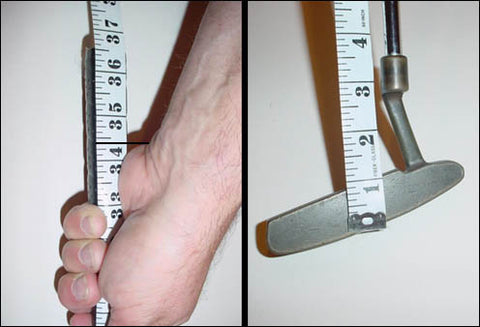What is a Birdie in Golf

In the vast world of golf, where every swing and stroke is meticulously measured, a term emerges that brings delight and a sense of accomplishment to players and spectators alike: the birdie. But what exactly does it mean? In this comprehensive guide, we will uncover the meaning and significance of a birdie in golf, exploring its origins, its place within the scoring system, and the thrill it brings to the game.
A birdie in golf is a term used to describe a score that is one stroke under par for a specific hole. It represents a golfer’s ability to complete the hole with exceptional skill, precision, and efficiency. The term “birdie” has a rich history, dating back to the early 20th century when it became a popular expression to signify excellence. Today, it is a common part of golfing vocabulary and a symbol of success on the course.
Join us as we embark on a journey to uncover the intricacies of a birdie, understanding its role in golf scoring, its impact on players’ strategies, and the joy it brings when achieved. Whether you’re a seasoned golfer seeking a deeper understanding of the game or a newcomer eager to unravel the mysteries of golf terminology, this guide will provide you with the knowledge you seek. So, let’s tee off and explore the world of birdies in golf.

Understanding Birdie: What Does It Mean?
A birdie in golf is a term used to describe a score that is one stroke under par for a hole. It signifies a level of excellence and skill, as the golfer managed to complete the hole with one stroke fewer than the expected number of shots. The term “birdie” has an interesting history, dating back to the late 19th century. Its origins can be traced to the American slang term “bird,” which was used to denote something excellent or outstanding.
Contextual Importance of Birdies in Golf Scoring
In the world of golf, scoring is a fundamental aspect that determines a player’s performance and success. The ability to achieve birdies consistently can significantly impact a golfer’s overall score and standings in a tournament. By scoring birdies, golfers gain an advantage over their competitors and move closer to the coveted top positions on the leaderboard. The pursuit of birdies adds an element of excitement and motivation to the game, driving players to push their limits and showcase their skills.
Scoring in Golf: Exploring the Par System
To understand the significance of a birdie, it’s essential to familiarize ourselves with the par system in golf. The par of a hole represents the number of strokes an expert golfer is expected to complete the hole in. Let’s delve into the par system and its role in scoring:
Explanation of Par Scores for Each Hole
Golf courses typically assign a par score to each hole based on its length and difficulty. The most common par scores for holes are:
- Par 3: Shorter holes that usually require the golfer to complete the hole in three strokes.
- Par 4: Medium-length holes that typically require the golfer to complete the hole in four strokes.
- Par 5: Longer holes that generally require the golfer to complete the hole in five strokes.
These par scores serve as a benchmark against which golfers measure their performance on each hole.
Differentiating Birdies from Pars and Other Scoring Terms
Now that we understand the par system, let’s differentiate birdies from other scoring terms commonly used in golf:
- Birdie: A birdie occurs when a golfer completes a hole in one stroke less than the par score. For example, scoring a 3 on a par 4 hole is a birdie.
- Par: A par is achieved when a golfer completes a hole in the exact number of strokes designated as the par score for that hole. For instance, scoring a 4 on a par 4 hole is a par.
- Bogey: A bogey is when a golfer completes a hole in one stroke over the par score. Scoring a 5 on a par 4 hole is a bogey.
- Double Bogey and Beyond: Double bogey, triple bogey, and so on, indicate scores that are two or more strokes above the par score for a hole.
It’s important to note that these terms are relative to the par score of the hole and provide a standardized way to track and compare performances on the golf course.
How is a Birdie Achieved?
Scoring a birdie requires skillful execution and precision on the golf course. Let’s explore the requirements and techniques for achieving a birdie:
Determining the Par Score for a Hole
Before attempting to score a birdie, it’s crucial to know the par score for the specific hole you’re playing. Golf courses typically provide this information on scorecards or through course signage. Understanding the par score sets the target for your performance on that hole.
Scoring a Birdie: Requirements and Execution
To score a birdie, you need to complete the hole in one stroke less than the designated par score. Let’s delve into the process of achieving a birdie:
- A Hole-by-Hole Breakdown of Scores: Depending on the par of the hole, you must carefully strategize your shots to position yourself for a birdie opportunity. For example, on a par 4 hole, you aim to reach the green in two shots and then sink the subsequent putt.
- Skillful Shot Execution and Precision: Scoring a birdie requires a combination of accurate drives, precise approach shots, and confident putting. Your tee shot should find the fairway, setting up an optimal angle for the subsequent shot. Approach shots must navigate hazards and position the ball for a makeable putt.
- Impact of Distance, Difficulty, and Course Conditions: Factors such as hole length, hazards, green undulations, and wind conditions influence the difficulty of scoring a birdie. Longer holes often require more powerful and accurate shots, while challenging greens demand a deft touch on the putter.
Achieving birdies consistently requires a blend of technical skills, course management, and mental focus. It is an accomplishment that showcases your ability to navigate the course with precision and capitalize on scoring opportunities.
Celebrating a Birdie: Golf Etiquette and Traditions
Scoring a birdie is a moment of triumph on the golf course, and it often warrants celebration. However, it’s important to adhere to proper etiquette and uphold the traditions of the game. Let’s delve into the etiquette and traditions associated with celebrating a birdie:
Commemorating a Birdie on the Course
Achieving a birdie is a personal accomplishment and a cause for celebration. Golfers often express their joy and satisfaction in various ways, such as:
- A Smile and a Nod: A simple smile and nod to your playing partners can convey your happiness and acknowledgment of a well-played hole.
- Fist Pump or High Five: A subtle fist pump or a high five with your playing partners can be an understated yet effective way to share your excitement.
- Quiet Fist Pump or Gentle Clap: In more formal or competitive settings, a discreet fist pump or a gentle clap can express your satisfaction while maintaining decorum.
Etiquette and Sportsmanship when Celebrating Birdies
While celebrating birdies is encouraged, it’s essential to maintain proper etiquette and sportsmanship on the golf course. Consider the following guidelines:
- Respect for Fellow Competitors: Be mindful of your playing partners and competitors. Avoid excessive celebration that might distract or disrupt their focus. Show respect for their shots and accomplishments as well.
- Proper Conduct: Remember to maintain the pace of play and avoid unnecessary delays caused by prolonged celebrations. It’s important to be mindful of other groups on the course and to keep the game moving smoothly.
By observing these guidelines, you can celebrate your birdie while respecting the traditions of the game and ensuring a positive playing experience for everyone involved.
Variations and Special Cases: Eagle, Albatross, and Condor
While a birdie is a remarkable achievement, there are even more exceptional scoring feats in golf. Let’s explore some of the variations and special cases beyond birdies:
Eagle: Scoring Two Strokes Under Par
An eagle is a scoring term used when a golfer completes a hole in two strokes under par. It represents an extraordinary feat that showcases exceptional skill and precision. For example, scoring a 2 on a par 4 hole or a 3 on a par 5 hole would be considered an eagle.
Albatross: Scoring Three Strokes Under Par
An albatross, also known as a double eagle, occurs when a golfer completes a hole in three strokes under par. Albatrosses are rare and typically achieved on long par 5 holes or on shorter par 4 holes with exceptional shots. Scoring a 1 on a par 4 hole or a 2 on a par 5 hole would be an albatross.
Condor: Scoring Four Strokes Under Par
The condor is the most remarkable and rarely seen scoring feat in golf. It occurs when a golfer completes a hole in four strokes under par. Achieving a condor is extremely rare and typically requires a combination of exceptional distance, accuracy, and favorable course conditions. Condors are most likely to happen on extremely long par 5 holes or on short par 6 holes.
It’s important to note that while birdies, eagles, albatrosses, and condors are exceptional achievements, they are less common and often the result of remarkable shots or favorable circumstances on the golf course.
Strategies for Consistently Scoring Birdies
Consistency in scoring birdies requires a combination of skill development, course management, and mental focus. Here are some strategies and tips to help you increase your chances of scoring birdies on the golf course:
1. Skill Development and Practice Routines
- Putting Practice: Dedicate time to improving your putting skills. Focus on distance control, reading greens, and developing a consistent stroke. Practice different putting drills to enhance your feel and touch on the greens.
- Approach Shot Accuracy: Work on your iron play and approach shots. Develop the ability to hit greens in regulation consistently, giving yourself birdie opportunities. Practice distance control, accuracy, and shot-shaping to improve your chances of setting up makeable putts.
- Short Game Proficiency: Sharpen your short game skills, including chipping, pitching, and bunker play. Having a solid short game allows you to recover from challenging situations and save pars or convert birdie opportunities.
2. Course Management and Shot Selection
- Strategic Tee Shots: Evaluate the layout of the hole and choose a tee shot that gives you the best position for your approach to the green. Consider the position of hazards, fairway contours, and wind direction to set up optimal angles and distances for your subsequent shots.
- Identify Birdie Opportunities: Study the golf course and identify holes that present realistic birdie opportunities. These may be shorter par 4s, reachable par 5s, or holes with favorable pin positions. Develop a game plan to take advantage of these opportunities during your round.
- Smart Risk-Reward Decisions: Assess the risk and reward of aggressive shots versus safer options. While taking calculated risks can lead to birdie opportunities, it’s important to weigh the potential reward against the potential consequences of a wayward shot.
3. Mental Approach and Focus
- Visualization: Imagine successful shots and visualize yourself making birdies. This mental imagery can help build confidence and improve your focus on the task at hand.
- Stay in the Present: Maintain a present-focused mindset, giving your full attention to each shot without dwelling on previous results or future outcomes. This helps you stay in the moment and make better decisions.
- Manage Pressure: Embrace the pressure of birdie opportunities as exciting challenges rather than overwhelming situations. Develop pre-shot routines that help you relax, focus, and execute your shots with confidence.
By implementing these strategies and practicing with purpose, you can enhance your ability to consistently score birdies on the golf course.
Professional Golf and Birdie Records
Birdies play a significant role in professional golf, and they often contribute to a player’s success and tournament outcomes. Let’s explore the significance of birdies in professional golf and highlight notable birdie records and achievements:
Notable Birdie Records in Professional Golf
- Most Birdies in a Single Tournament: Professional golfers have showcased their birdie-making prowess by achieving remarkable records. For instance, the record for the most birdies in a single PGA Tour tournament is held by Michael Bradley, who recorded 32 birdies during the 1995 Greater Hartford Open.
- Most Birdies in a Season: The most birdies in a single season on the PGA Tour is a record held by Mark Calcavecchia, who recorded 409 birdies during the 2001 season. This achievement highlights the consistency and scoring ability of elite golfers.
Historical Achievements and Iconic Birdie Moments
Throughout the history of professional golf, birdies have played a crucial role in defining memorable moments. From clutch birdie putts to dramatic comebacks, here are a few iconic birdie moments:
- Jack Nicklaus’ Birdie Putt at the 1986 Masters: In what is considered one of the greatest moments in golf history, Jack Nicklaus sank a birdie putt on the 17th hole during the final round of the 1986 Masters Tournament. This pivotal putt propelled him to victory at the age of 46, making him the oldest winner of the Masters.
- Tiger Woods’ Birdie on the 16th Hole at the 2005 Masters: Tiger Woods hit an incredible chip shot on the par-3 16th hole at Augusta National during the final round of the 2005 Masters. The ball rolled towards the hole, paused at the edge, and then dropped for a dramatic birdie, igniting roars from the crowd.
These memorable moments showcase the impact and excitement that birdies can bring to professional golf. They demonstrate the skill, composure, and ability of golfers to rise to the occasion when facing challenging situations.
In conclusion, birdies are not only a testament to a golfer’s skill and precision but also a source of excitement and celebration in both professional and recreational golf. They represent moments of achievement and inspire golfers to continue honing their skills in pursuit of that elusive under-par score.





